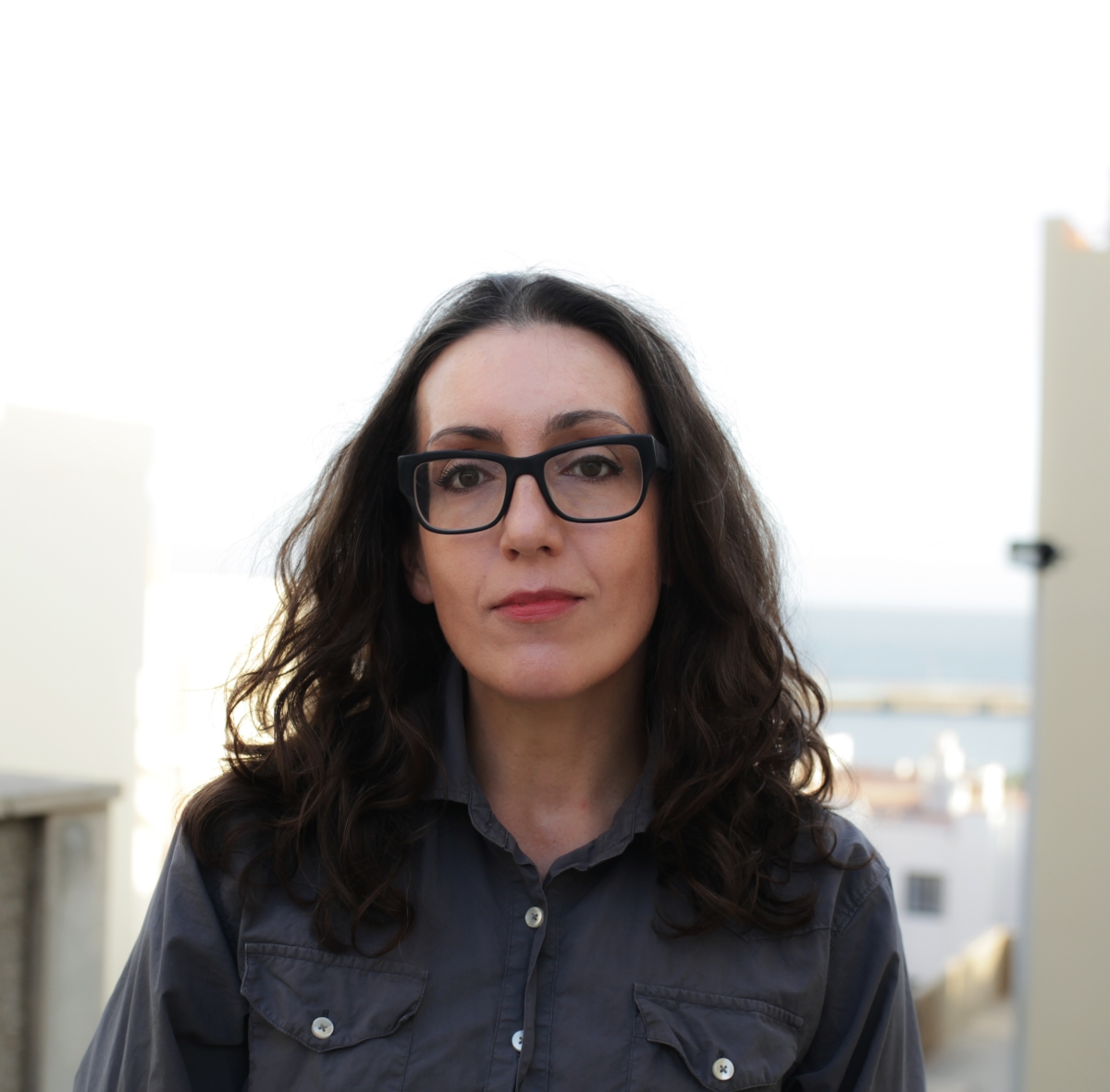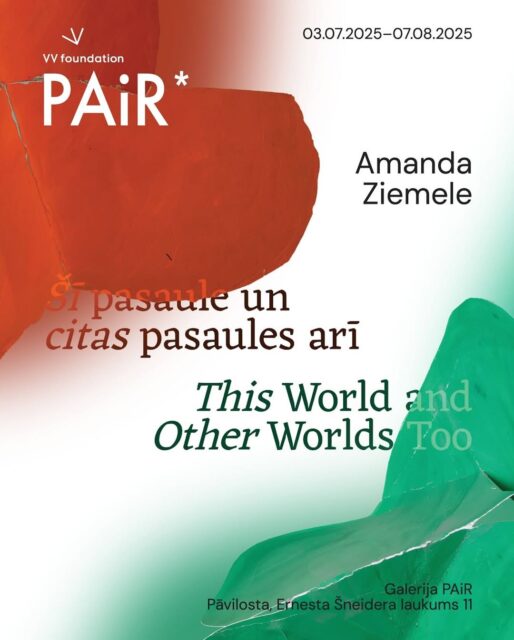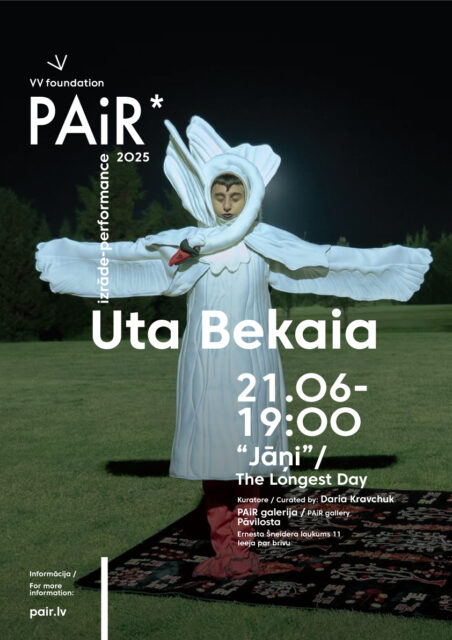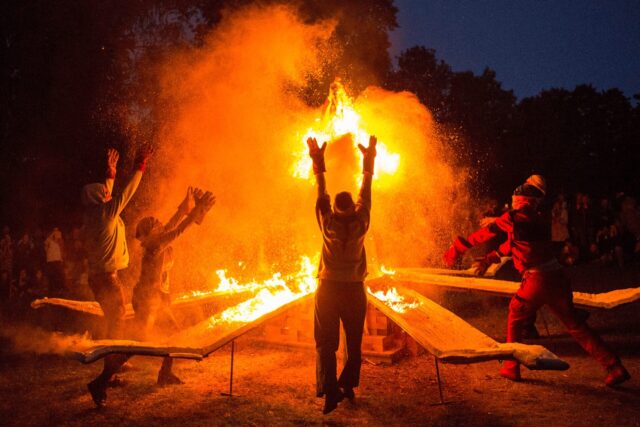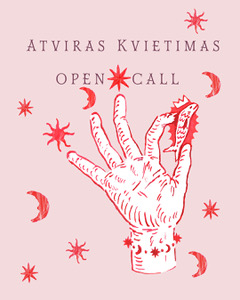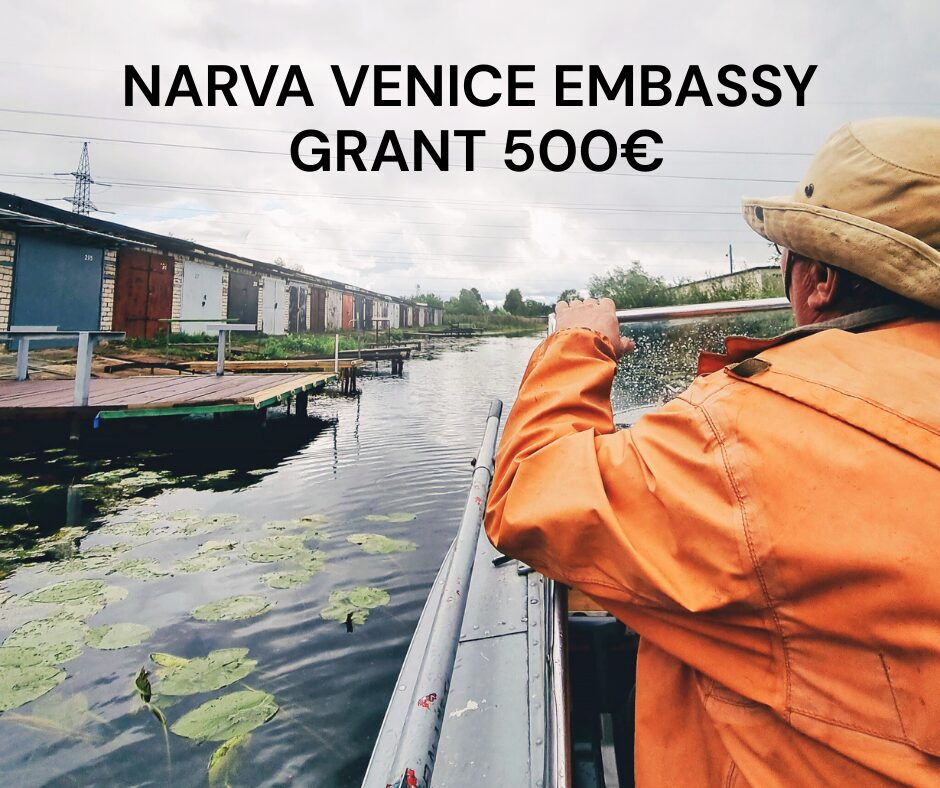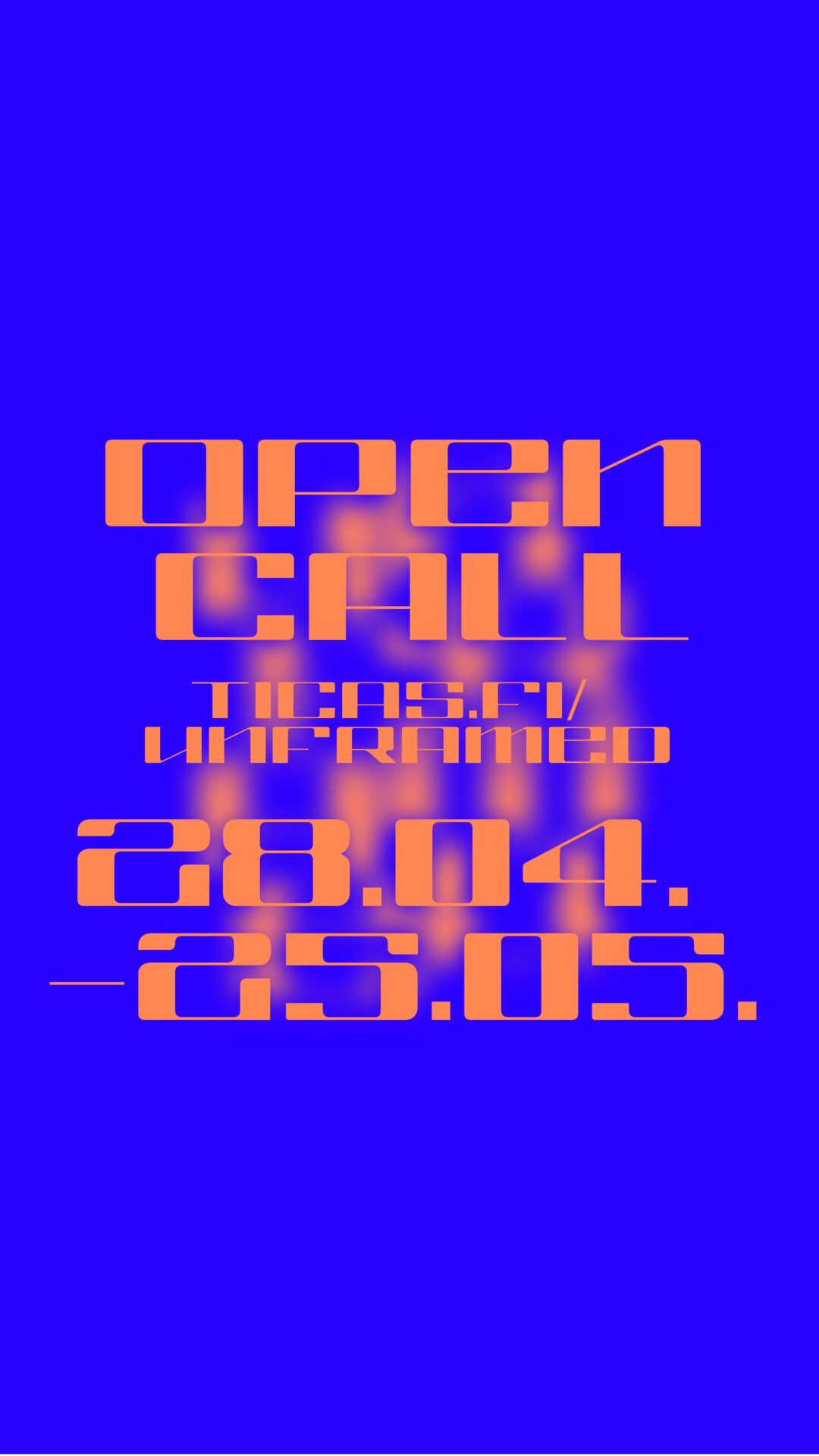On 17 July, the National Gallery of Art in Vilnius hosted the closing symposium of the exhibition ‘If Disrupted, it Becomes Tangible. Infrastructures and Solidarities beyond the Post-Soviet Condition’ (curated by Antonina Stebur and Aleksei Borisionok). During the event, two renowned scholars, Svitlana Matviyenko and Eglė Rindzevičiūtė, engaged in an extensive conversation on topics of nuclear temporalities and nuclear infrastructures. In their research, both scholars delve into the wider implications of these infrastructures, considering their impact on communities, power dynamics, and social, cultural and environmental discourses of the past and present. Drawing on the artworks presented in the exhibition, such as Oleksiy Radynski’s film Studies for Chernobyl 22, the scholars focused on the post-Soviet space and regions that experienced Soviet nuclear policy in the past and Russian imperialist war, the ‘nuclear terror’, and the political uprisings today. In this article, we are happy to present a transcript of Eglė Rindzevičiūtė‘s talk.
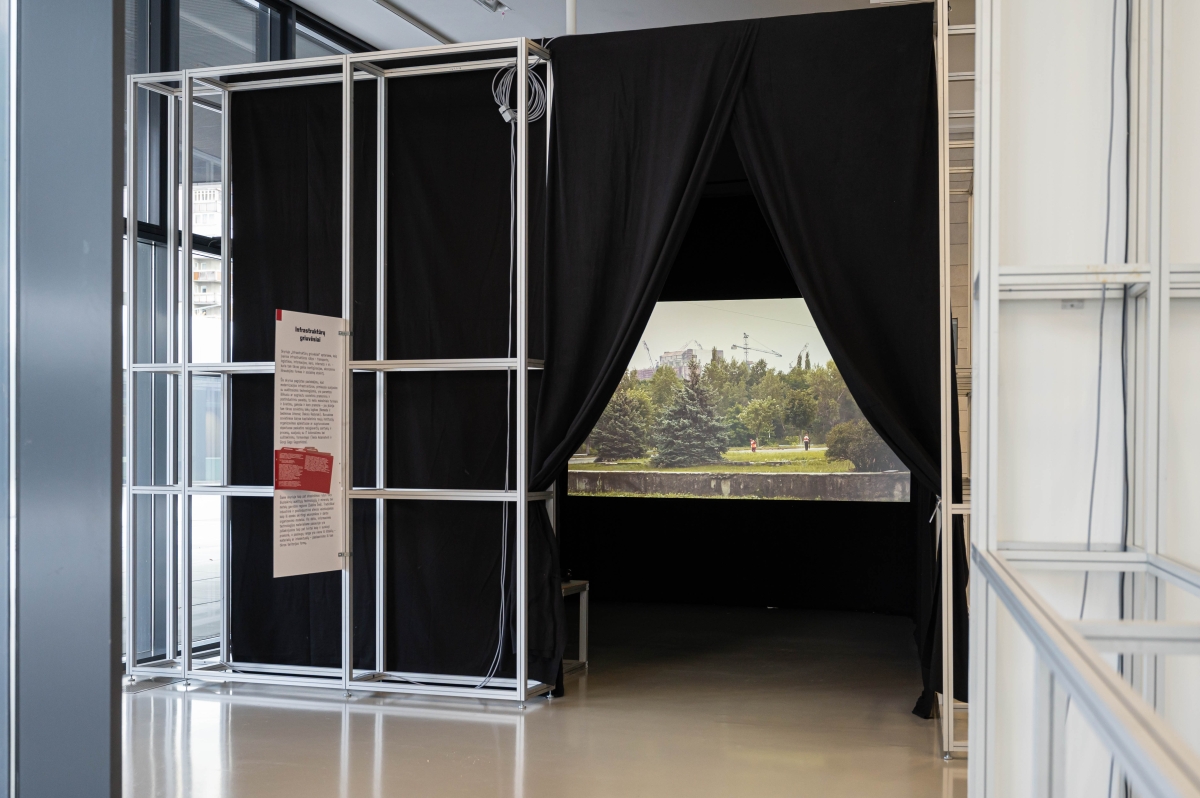
Exhibition ‘If Disrupted, it Becomes Tangible. Infrastructures and Solidarities beyond the Post-Soviet Condition’. Oleksiy Radynski’s film ‘Studies for Chernobyl 22′, National Gallery of Art in Vilnius, 2023. Photo: Gintarė Grigėnaitė
17 June 2023
It was very difficult to find the words for the talk today. Since Russia brutally invaded Ukraine more than a year ago, much has been said about the role of man-made and natural environments that have found themselves hosts and hostages of the military action. The world has been paying particularly close attention to nuclear power plants and radioactive waste stores, gaping at Russia’s blatant disregard of international law prohibiting military action in the vicinity of nuclear establishments, but also at what appeared to be the baffling and disturbing lack of knowledge in the Russian army about the radiological hazards to which they were exposing themselves and others.
In the weeks coming up to the event, Svitlana and the curators exchanged emails and conversations discussing possible topics. But these agreements, as it turned out, were ephemeral; the war undid them in one blow when last week Russia blew up and destroyed the Nova Kakhovka dam, flooding a vast area, and killing and displacing people and animals. What can be said in this context of ongoing destruction and suffering? The American historian Paul Josephson called Putin’s approach a ‘scorched earth policy’, where communist ‘hero’ projects, built at great human and environmental cost, are sacrificed to the war.
Infrastructure, as this exhibition shows, can be a host, a hostage, and a weapon. In all cases, it constitutes a set of temporalities that organise society though sense-making and practice. The war reveals the greatly hybrid and ambivalent power of infrastructure in a very sad and terrifying way.
I was deeply touched by Oleksiy Radynski’s film Studies for Chornobyl 22, when engineers, managers and scientists who worked at the Chornobyl site explained their decision to stay on the site, because, as they put it, ‘they could not leave.’ It was, they said, their duty and moral obligation to look after Chornobyl, regardless of the regime and the army which threatened their lives. Their past, as well as their future, is deeply tied up with the site; their temporality is not accounted for; it is not duration, it cannot be captured by measuring the start and the end; it is, rather, endurance.
What endures is radioactivity, chopped, for the convenience of human organisation, into half-lives, but also emotion, which does not do half-life. Radynski’s interlocutors have a highly affective relationship with infrastructure, as something more than just a utility, something to be used and not to think about, unless it is disrupted, stops working, or stops serving, invisibly, its purpose.
These special groups of people see their own role in society through their technical and organisational engagement with infrastructures. But are these planners, builders and custodians of infrastructures sufficiently understood? I argue that emotional affects should be taken seriously.
Much of the history of science and technology, as well as cultural criticism of modernity, has centred precisely on modern infrastructural and industrial ambition. James Scott, in his influential book Seeing Like a State (1998), drew a parallel between government centralisation and the building of infrastructures, such as roads, mines, irrigation systems and industrial farming. For Scott, expert-based infrastructure building was a colonial and exploitative practice. Extending infrastructures overseas, coupling them into the administrative networks of trade and taxation, was theorised by the historian Timothy Mitchell as the creation of liberal governance-at-a-distance, coextensive with the empire (Rule of Experts: Egypt, Techno-Politics, Modernity, 2002).
Finally, the politics of infrastructure has become a favourite suspect among philosophers – the development of infrastructure granted powers to engineers, managers, accountants – leading to the emergence of new technocratic governance. This technocratic apparatus, according to Jürgen Habermas, is fundamentally dehumanising. Infrastructural technocrats apply rationalistic frameworks on the ‘lifeworld’, in line with top-down, authoritarian and non-deliberative forms of social order. Habermas sees infrastructures and expertise as extensions of the rational reason that exploits and subjugates humanity.
However, in the last three decades, this critique of the politics infrastructure was contested by many STS scholars, particularly anthropologists, who opened up the black box of infrastructural technocracies, and re-vitalised it.
As the British anthropologist Penny Harvey has shown in her influential work on road building in Peru, even when they are imposed from above, the implementation of infrastructures takes place through negotiation, contestation and evolution. As Harvey details, engineers in Peru did not see themselves as ‘conquering’ the mountains and materialities, but as negotiating with them, respecting their lack of standardisation, and embracing the unexpected. The locals, in turn, were not subjugated to the centralised visions of road modernity, but rather actively engaged in discussing the precise locations of the roads in relation to their communities (Penny Harvey and Hannah Knox, Roads: An Anthropology of Infrastructure and Expertise, 2015).
The Peru road infrastructures, for Harvey, were not the simple implementation of a blueprint, but a complex process where roads co-evolved, in a political process where the agency of infrastructure emerged as organic, alive and affectionate. Indeed, as Harvey and Radynski show, infrastructures generate emotional relations, such as Affect and Care.
Material infrastructures can also have existential biographies, as Andrew Barry and Susan Schuppli argue in their work on ‘material witnesses’ and ‘critical infrastructures’. This is particularly clear in the case of disasters, such as the explosion at Chornobyl, where persistent radioactivity makes the entire zone a site of memory, and not forgetting the victims of the accident. The Chornobyl site and zone cannot be conveniently hidden away: they witness the injustices and the mistakes of the past for the future.
I hope you can see that these emotive qualities of infrastructure are very different from conquering, overpowering and dominating. Affect and care can be just as integral values of engineering and managerial mentalities as control and efficiency.
In the context of war, industrial utility infrastructures are ‘vital’ in a direct sense: they create, but also destroy, the social tissue. In that, they are part of the ‘body politic’, but, I suggest, not like organs, as early modern and modern anatomists saw them (the bones, hearts, lungs and nerves of the state). They are more like cellular systems that enable fundamental metabolism through circulation and signalling.
The temporality of nuclear infrastructures is often thought of in terms of geological deep time, the formation of uranium, and the extreme long term, the radioactivity continued for hundreds of thousands of years. Commenting on marker projects to mark radioactive waste depositories, the archaeologist Rosemary Joyce has pointed out that all material signs from the human deep past are mistaken as signs for the future: the Hamurabi stella, the monuments, these objects were communicational devices addressed to the present, their survival for millennia was little more than a happy accident. The same with radioactivity, even thinking about future generations should indeed be directed at the present (The Future of Nuclear Waste, 2020).
We need new vocabularies to speak about nuclear infrastructure as part of the body politic, that is temporally organised but not mythologised. These vocabularies, I suggest, should go beyond the mechanics, to embrace bio-cybernetic terms, as only these terms can help us to fully understand the way damage to infrastructure affects society.
Putin targets vital infrastructure, nuclear sites, dams, because he wants to destroy the life of the state itself, where the state is understood as a regime that seeks to ensure the survival, security and wellbeing of the population, in a Foucauldian way. Putin’s war is clearly not about resources, it is about the cellular destruction of Ukraine.
The signalling value of infrastructure, akin to the hormonal system that switches on or off the genetic architecture of cells, is particularly important here. The destruction of infrastructure is about the loss of its signalling power, the loss of memory, the loss of archives, as Radynski showed, the loss of the cultural heritage, as Darya Tsymbaliuk, Iryna Sklokina, Victoria Donovan and others have detailed, where the industrial landscape of Donbas is being erased. It can be compared with burning a body to hide the evidence of crimes committed: centuries of human and environmental damage to Ukraine.
Finally, this war suggests that all vital infrastructures are born equal: there is no nuclear exceptionalism. There is a widespread argument in the nuclear community that the hazardous process of chain reaction is made safe by design and technology, an exceptional safety culture, and national and international regulations.
All of these components have been violated on Ukrainian territory. The new meaning of the term ‘nuclear shield’ no longer refers to nuclear weapons, but to taking nuclear power plants hostage.
The new temporality of nuclear infrastructure, as of the perpetual present, of the imperative of living in the moment, not being able to leave it, not because of coercion, but because of love, because of empathy, by reasserting being part of the living world and of a world worth living.
Dr Eglė Rindzevičiūtė is an Associate Professor of Criminology and Sociology in the Department of Criminology, Politics and Sociology at Kingston University London. Before that, she held academic positions at Sciences Po in Paris, and Gothenburg and Linköping universities in Sweden. She has been a visiting scholar in the Department of History and Philosophy of Science at the University of Cambridge (2019). Dr Rindzevičiūtė is the author of The Will to Predict: Orchestrating the Future (Cornell University Press, 2023) and The Power of Systems: How Policy Sciences Opened up the Cold War World (Cornell University Press, 2016). andthe director of ‘Nuclear Spaces: Communities, Locations and Materialities of Nuclear Cultural Heritage (NuSPACES)’ (2021–2024), funded by a grant from the European Union Joint Programming Initiative for Cultural Heritage.
This project is financed by the Lithuanian Culture Council
Partner: European Humanities University (EHU)
Sponsor: Goethe-Institut*
*The project was incorporated into a comprehensive package of measures for which the Federal Foreign Office provided funding from the 2022 Supplementary Budget to mitigate the effects of the Russian war of aggression against Ukraine.
